For the last 14 months I've been happily very busy as a compositor in Hollywood and as a DFX Supervisor in Mumbai.
In Mumbai India, supervising was an adventure.
I had a mixed team of Nuke,Shake and After Effects compositors. Most of the work involved pulling green screens and integrating the cg and live action into matte paintings, which we had to upgrade with moving clouds, fire effects, smoke and other atmospherics. We had over 500 shots on one show, and during the time I was there we worked on about a dozen projects. We dabbled in some 3DStereo work.
 During my first safari in India, I taught NUKE at Reliance Media Works, also in Mumbai. Whenever possible I was hands-on in NUKE, setting up shot templates, working out problems and teaching best work-flows. I stress the importance of using the simplest node possible for the job and keeping comps neat for collaboration. I did some NUKE work setting up our pipeline for Priest and Pirates, which were a ton of roto and compositing.
During my first safari in India, I taught NUKE at Reliance Media Works, also in Mumbai. Whenever possible I was hands-on in NUKE, setting up shot templates, working out problems and teaching best work-flows. I stress the importance of using the simplest node possible for the job and keeping comps neat for collaboration. I did some NUKE work setting up our pipeline for Priest and Pirates, which were a ton of roto and compositing.
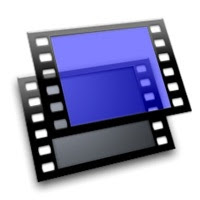 I also dove into Shake, compositing shots and elements for artists to use in mass production. About half the crew worked in Shake, so I spent a good deal of time last winter helping them out with the finer aesthetics of integrating live action with matte paintings and adding digital opticals. Most of this work was for a local episodic pilot.
I also dove into Shake, compositing shots and elements for artists to use in mass production. About half the crew worked in Shake, so I spent a good deal of time last winter helping them out with the finer aesthetics of integrating live action with matte paintings and adding digital opticals. Most of this work was for a local episodic pilot.
 With only one other After Effects artist and lots of motion graphics work, well, I took-on a bunch of comp work to free him up for other shots. Although most of the work was finished before I arrived, I did get in on a couple of Gulliver's Travels shots in AE.
With only one other After Effects artist and lots of motion graphics work, well, I took-on a bunch of comp work to free him up for other shots. Although most of the work was finished before I arrived, I did get in on a couple of Gulliver's Travels shots in AE.
While I was hands-on as much as possible in compositing, I also had lots of work with my crew working in CG, matte painting, roto, matchmove and previs. As the on-floor supervisor, a lot of my time was taken up with meetings with client directors -- but still I got in lots of comp hours.
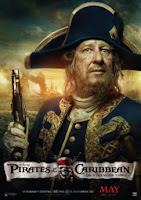
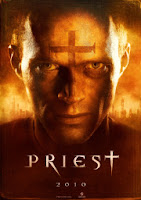
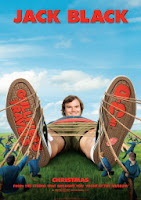
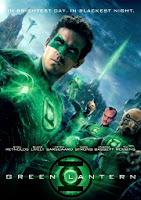
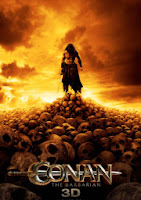
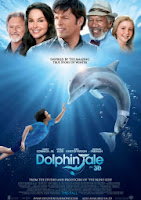
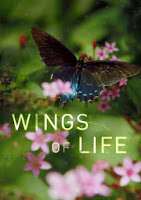
Back in the USA, I jumped right into compositing
at yU+co, a "player" in motion graphics main titles and such. My former AceFx partner, Stevan del George hooked me up with Garson Yu, who I last worked with during Immortal Beloved making the producer's tag for Mel Gibson's Icon Productions, Stevan needed a crack compositor to move comps from design to completion and help him focus more on his duties as studio stereographer.
I was tossed into Pirates of the Caribbean On Stranger Tides to make the final comp from production roughs and get things stereo-ready. This involved a lot of roto but more than anything, a streamlined pipeline to accommodate many changes to the look and content of the main-on-end titles. From there I jumped into the Green Lantern, followed quickly by Conan, and Dolphin Tale -- all 3D movies. I moved into stereo production also -- assisting Stevan here and there and adjusting convergence from time to time.
In addition to these films, they tasked me with numerous other projects -- titles for the 2D film Wings of Life, several production company tags and commercials for McDonalds, Puffins cereal and the United States Navy -- 100% on watch! I was able to work about 30% in Nuke, 60% in After Effects and the rest in Maya -- an old love.
Anyway, it's been a busy 14 months and I've finally gotten a little time, so I've updated my resume and reel to reflect all this fine work -- work done in collaboration with great artists here and in Mumbai I was honored to work with. I love this job.
In Mumbai India, supervising was an adventure.
I had a mixed team of Nuke,Shake and After Effects compositors. Most of the work involved pulling green screens and integrating the cg and live action into matte paintings, which we had to upgrade with moving clouds, fire effects, smoke and other atmospherics. We had over 500 shots on one show, and during the time I was there we worked on about a dozen projects. We dabbled in some 3DStereo work.
 I also dove into Shake, compositing shots and elements for artists to use in mass production. About half the crew worked in Shake, so I spent a good deal of time last winter helping them out with the finer aesthetics of integrating live action with matte paintings and adding digital opticals. Most of this work was for a local episodic pilot.
I also dove into Shake, compositing shots and elements for artists to use in mass production. About half the crew worked in Shake, so I spent a good deal of time last winter helping them out with the finer aesthetics of integrating live action with matte paintings and adding digital opticals. Most of this work was for a local episodic pilot.While I was hands-on as much as possible in compositing, I also had lots of work with my crew working in CG, matte painting, roto, matchmove and previs. As the on-floor supervisor, a lot of my time was taken up with meetings with client directors -- but still I got in lots of comp hours.







Back in the USA, I jumped right into compositing
at yU+co, a "player" in motion graphics main titles and such. My former AceFx partner, Stevan del George hooked me up with Garson Yu, who I last worked with during Immortal Beloved making the producer's tag for Mel Gibson's Icon Productions, Stevan needed a crack compositor to move comps from design to completion and help him focus more on his duties as studio stereographer.
I was tossed into Pirates of the Caribbean On Stranger Tides to make the final comp from production roughs and get things stereo-ready. This involved a lot of roto but more than anything, a streamlined pipeline to accommodate many changes to the look and content of the main-on-end titles. From there I jumped into the Green Lantern, followed quickly by Conan, and Dolphin Tale -- all 3D movies. I moved into stereo production also -- assisting Stevan here and there and adjusting convergence from time to time.
In addition to these films, they tasked me with numerous other projects -- titles for the 2D film Wings of Life, several production company tags and commercials for McDonalds, Puffins cereal and the United States Navy -- 100% on watch! I was able to work about 30% in Nuke, 60% in After Effects and the rest in Maya -- an old love.
Wings of Life and the other work Louie Schwartzberg is doing at Moving Art is way cool -beautiful, moving. I suggest you check it out. http://www.movingart.tv/wingsoflife
Anyway, it's been a busy 14 months and I've finally gotten a little time, so I've updated my resume and reel to reflect all this fine work -- work done in collaboration with great artists here and in Mumbai I was honored to work with. I love this job.





